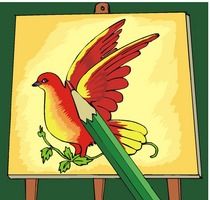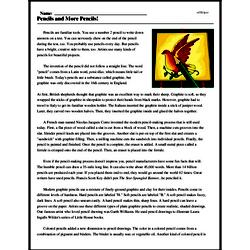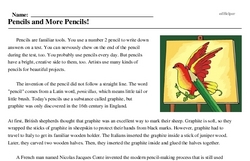Pencils and More Pencils!
Pencils are familiar tools. You use a number 2 pencil to write down answers on a test. You can nervously chew on the end of the pencil during the test, too. You probably use pencils every day. But pencils have a bright, creative side to them, too. Artists use many kinds of pencils for beautiful projects.
The invention of the pencil did not follow a straight line. The word "pencil" comes from a Latin word, penicillus, which means little tail or little brush. Today's pencils use a substance called graphite, but graphite was only discovered in the 16th century in England.
At first, British shepherds thought that graphite was an excellent way to mark their sheep. Graphite is soft, so they wrapped the sticks of graphite in sheepskin to protect their hands from black marks. However, graphite had to travel to Italy to get its familiar wooden holder. The Italians inserted the graphite inside a stick of juniper wood. Later, they carved two wooden halves. Then, they inserted the graphite inside and glued the halves together.




